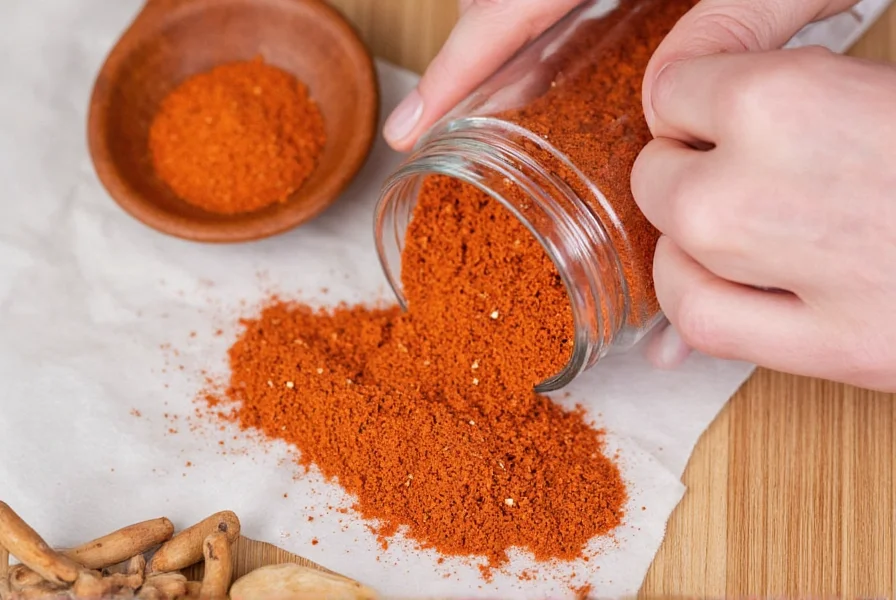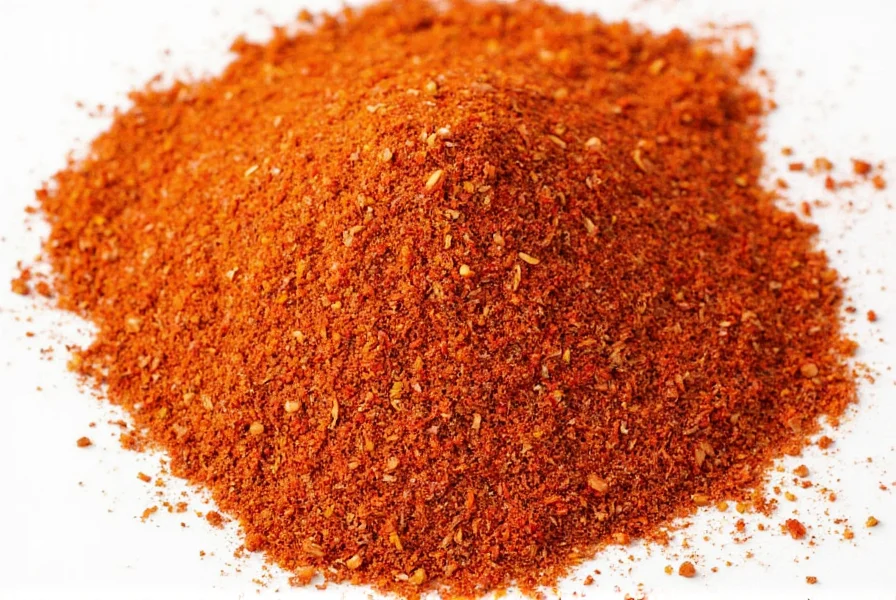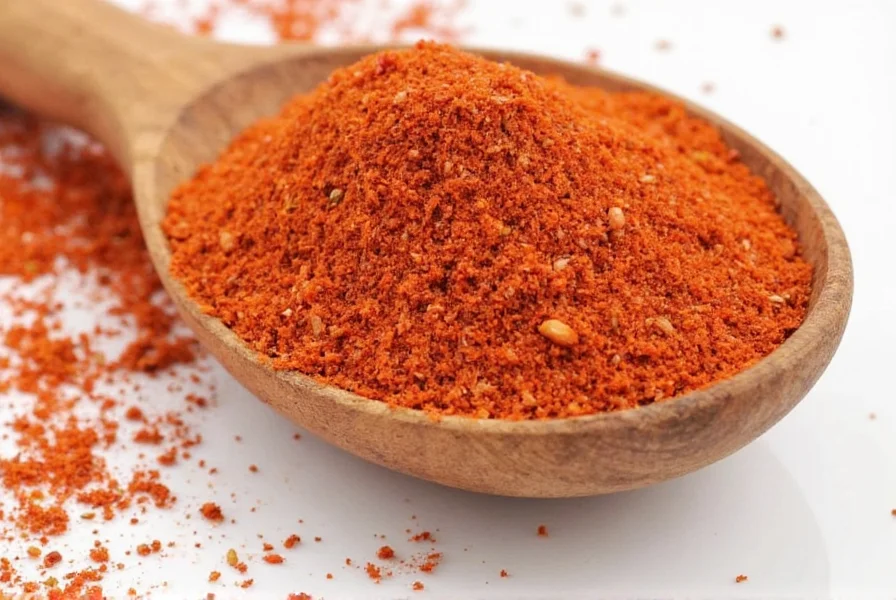Confusion about pimento seasoning runs rampant in home kitchens. Many cooks mistakenly think it's a pepper-based blend when it's actually pure ground allspice berries. The term "pimento" refers to the allspice berry (Pimenta dioica), named by Spanish explorers who thought it combined flavors of pepper, cinnamon, and clove. Understanding this distinction transforms how you use this versatile spice in everyday cooking.
What Exactly Is Pimento Seasoning?
The persistent confusion around pimento seasoning stems from two completely different ingredients sharing similar names. True pimento seasoning consists solely of ground allspice berries. Meanwhile, "pimento" also refers to sweet red peppers (sometimes called pimientos), leading many to incorrectly assume pimento seasoning contains these peppers.
Allspice berries come from the Pimenta dioica tree native to Jamaica and Central America. When dried and ground, these small berries create the spice known as allspice in most of the world and pimento seasoning in Caribbean culinary traditions. The name "allspice" emerged because early European explorers detected flavors reminiscent of multiple spices in one berry.
| Term | Actual Meaning | Common Misconception |
|---|---|---|
| Pimento Seasoning | Ground allspice berries | Blend containing red peppers |
| Allspice | Same as pimento seasoning | Different from pimento seasoning |
| Pimiento | Sweet red peppers | Same as pimento seasoning |
Flavor Profile and Culinary Characteristics
Pimento seasoning delivers a complex flavor profile that explains its culinary versatility. The dominant notes include:
- Warm baking spices - reminiscent of cinnamon and nutmeg
- Clove-like sharpness with subtle floral notes
- Peppery finish that distinguishes it from other warm spices
- Faint citrus undertones in high-quality fresh allspice
Unlike pre-mixed seasoning blends, authentic pimento seasoning contains no additional ingredients. Its potency diminishes quickly after grinding, which is why whole allspice berries maintain flavor longer than pre-ground versions. For the most vibrant flavor in your jerk chicken or spiced rum cake, always grind whole berries just before use.

Traditional Uses in Global Cuisines
Chefs worldwide rely on pimento seasoning for specific culinary applications where its unique flavor profile shines:
Caribbean Cuisine
Jamaican jerk seasoning forms the backbone of authentic jerk chicken and pork. Traditional recipes combine pimento seasoning with Scotch bonnet peppers, thyme, garlic, and scallions. The allspice flavor penetrates meats during slow grilling over pimento wood, creating that distinctive smoky-sweet profile.
Middle Eastern Dishes
In Levantine cooking, pimento seasoning appears in baharat spice blends and meat rubs. It complements lamb exceptionally well and features prominently in kibbeh and stuffed grape leaves. Many home cooks don't realize they're tasting allspice when enjoying these dishes.
Latin American Applications
Mexican mole sauces often include pimento seasoning alongside chocolate and chilies. In Puerto Rican adobo blends, it combines with oregano and garlic powder. The spice's warming quality balances the heat from chilies while adding depth to bean dishes and stews.
How to Use Pimento Seasoning Effectively
Mastering pimento seasoning requires understanding when and how much to use. Unlike many spices, allspice benefits from early addition during cooking to allow its complex flavors to develop fully.
For meat dishes: Incorporate 1-2 teaspoons per pound of meat. The spice penetrates proteins effectively, especially when combined with acidic ingredients like citrus juice or vinegar. This explains its prominence in jerk marinades where the acid helps the allspice flavor permeate the meat.
In baking applications: Use 1/4 to 1/2 teaspoon in recipes calling for warm spices. Pimento seasoning elevates gingerbread, pumpkin pie, and spiced cakes with its complex profile. Many professional bakers prefer it over individual spices because it provides balanced warmth without overwhelming any single note.
With vegetables: Toss root vegetables with olive oil and 1/2 teaspoon pimento seasoning before roasting. The spice enhances natural sweetness in carrots, sweet potatoes, and squash while adding intriguing complexity.
Pimento Seasoning Substitutions and Storage
When you run out of pimento seasoning, proper substitutions depend on your recipe's requirements:
- For Caribbean dishes: Combine equal parts cinnamon, nutmeg, and cloves (¼ tsp each per ½ tsp allspice)
- For baking: Use ⅝ tsp cinnamon plus ⅛ tsp each of nutmeg and cloves
- For meat rubs: Add a pinch of ground cloves to your regular spice blend
Never substitute pre-mixed pumpkin pie spice, as its sugar content and additional spices will alter your recipe's balance. Proper storage maintains pimento seasoning's potency - keep whole berries in an airtight container away from light and heat. Ground allspice loses 40% of its flavor within six months, while whole berries retain quality for 2-3 years.

Creating Your Own Pimento Seasoning Blend
While authentic pimento seasoning contains only ground allspice berries, some regional variations incorporate complementary spices. If you want to create a Caribbean-inspired seasoning blend that highlights pimento's unique qualities:
Basic Homemade Pimento Seasoning:
• 2 tablespoons whole allspice berries
• 1 teaspoon whole black peppercorns
• ½ teaspoon whole cloves
Toast spices in a dry skillet over medium heat for 2-3 minutes until fragrant. Cool completely, then grind to a fine powder using a spice grinder. Store in an airtight container away from light. This blend enhances the natural warmth of allspice while adding subtle complexity from the supporting spices.
Common Misconceptions About Pimento Seasoning
Several persistent myths prevent home cooks from using pimento seasoning effectively:
Myth: Pimento seasoning contains red peppers
Reality: The confusion comes from "pimento" also referring to sweet red peppers (pimientos). True pimento seasoning contains zero peppers.
Myth: Allspice and pimento seasoning are different spices
Reality: They're identical - just different regional names for ground allspice berries.
Myth: Pimento seasoning is extremely hot
Reality: It has mild warmth similar to black pepper, not chili heat. The name relates to its peppery notes, not actual heat level.
FAQ: Frequently Asked Questions About Pimento Seasoning
Is pimento seasoning the same as allspice?
Yes, pimento seasoning and allspice are identical - both refer to ground allspice berries. The different names reflect regional preferences, with "pimento" commonly used in Caribbean cooking and "allspice" more common elsewhere.
Can I substitute paprika for pimento seasoning?
No, paprika won't work as a substitute. Paprika provides color and mild pepper flavor, while pimento seasoning offers warm baking spice notes. For Caribbean dishes, combine cinnamon, nutmeg, and cloves instead.
What's the difference between pimento and pimiento?
Pimento refers to allspice berries, while pimiento (with an extra 'i') describes sweet red peppers. The similar spelling causes frequent confusion, but they're completely different ingredients with no relationship.
How much pimento seasoning should I use in recipes?
Start with ¼ to ½ teaspoon per serving. For meats, use 1-2 teaspoons per pound. In baking, begin with ¼ teaspoon and adjust to taste. Remember that pimento seasoning's flavor intensifies during cooking, so it's better to start with less and add more as needed.
Does pimento seasoning expire?
Ground pimento seasoning loses potency within 6 months, while whole allspice berries stay fresh for 2-3 years. Store in an airtight container away from light and heat. To test freshness, crush a berry between your fingers - fresh allspice should release a strong, complex aroma immediately.











 浙公网安备
33010002000092号
浙公网安备
33010002000092号 浙B2-20120091-4
浙B2-20120091-4